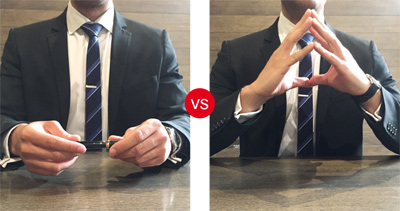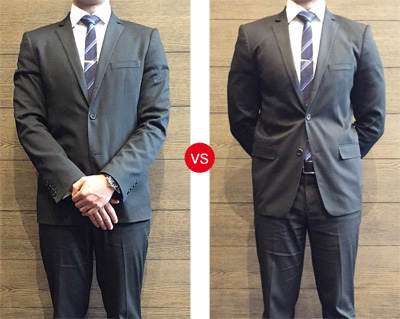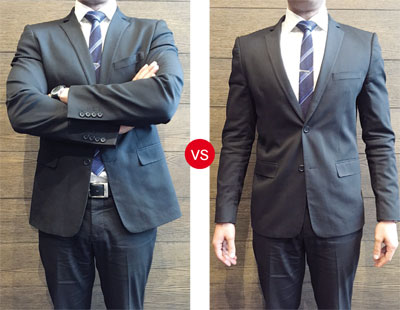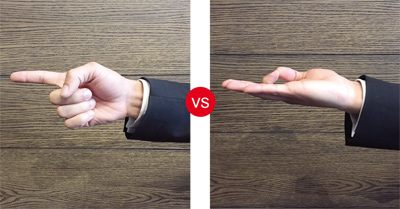Communication is broken down into 55 per cent body language, 38 per cent tonality and 7 per cent words. What this indicates is that your body language constitutes most of your communication; yet we put so much focus on our wording without giving much thought on what we’re really saying.
Ensuring that we know and use the correct body language not only places us in a position of power but also ensures that our colleagues, clients and competition interpret our behaviour correctly.
Sometimes you may verbally say nothing and yet your body language and posture shout another message. Ralph Waldo Emerson said, “What you do speaks so loud that I cannot hear what you say.”
In fact, 93 per cent of a first impression is non-verbal, yet companies put very little emphasis on learning this one important fact.
Reading Someone’s Body Language
There are a number of positions every strong-minded, driven businessman/woman should know. I have broken it down into a simple method for understanding other people’s body language and from there we can perfect our own.
The first question you need to ask yourself when observing another person’s body position is: “Is this person’s body language open or closed?”
This helps you understand immediately if the person is in a positive or a negative mental state. Closed indicates that the person is in a negative mental state; this could indicate that they are sad, insecure, bored, annoyed, not listening etc. A closed body position is when the individual holds himself/herself or crosses arms, legs or objects particularly across the body or chest.
Sometimes you may verbally say nothing and yet your body language and posture shout another message
Whereas an open position indicates that the individual is either relatively confident or comfortable. Alternatively if they are ‘puffing up’, making themselves as big as possible then one may assume that they could be preparing for a fight. The ‘open’ person does not cross their arms, legs or use objects to cover their body. There is simply an uninterrupted line of sight between you and any part on the front of the other person’s body.
Just by being able to ask yourself the question—open or closed?—you can immediately understand almost 50 per cent of their emotional state—that being negative or positive.
Now considering you can read the very basics of how someone feels, it is important to turn the focus to yourself and ensure that you are conveying the correct message.
Below is a list of positive and negative positions and whether they are acceptable in specific situations.
Body Language Specifics: When to Use and When to Avoid
Pointing Directly at Someone
Interpretation—People feel scrutinised, threatened and defensive. If used to reprimand someone, it causes the brain to flood with cortisol, the stress hormone, causing that person’s thinking capabilities to shut down completely
- Correct time to use: when motivating someone directly, telling him/her that they can achieve something
- Incorrect time to use: when calling, reprimanding or talking to someone
Forefinger to Thumb
When gesturing at someone, you may press your forefinger to your thumb with your other fingers extended; with this you will project an authoritative but not aggressive air.
Interpretation—Non-threatening, Authoritative
- Correct time to use: when gesturing towards someone
Fidgeting With Hands, Pen or Object
 Interpretation—Nervous, Uncertain
Interpretation—Nervous, Uncertain
- Correct time to use: never!
- Incorrect time to use: during meetings, negotiations, social events
Steeple Hand Gesture
Interpretation—Authority, Power
- Correct time to use: show authority and power in meeting, negotiation or conference.
Holding Hands in Front of You
 Interpretation—Protecting yourself, feeling slightly nervous; Uncomfortable
Interpretation—Protecting yourself, feeling slightly nervous; Uncomfortable
- Correct time to use: non-threatening situations where assuming a more submissive role may be more beneficial
- Incorrect time to use: when you are expected to stand out and express power and dominance
Holding Hands Behind Your Back
Interpretation—Air of confidence, Superiority
- Correct time to use: when you feel like you need to take the upper hand in a conversation
- Incorrect time to use: when in a social setting and/or attempting to create relationships with potential clients or referrals
Tucking Thumbs Into Pockets
 Interpretation—Aggression
Interpretation—Aggression
- Correct time to use: when in a potentially threatening situation
- Incorrect time to use: when standing casually in conversation with people or when standing on your own
Hands On Hips
This is an extremely powerful and domineering position and therefore should be used sparingly to assert authority and dominance
Interpretation—Extreme power, Dominant
- Correct time to use: expressing your authority and power in a group of people
- Incorrect time to use: when trying to make someone feel comfortable
Crossed Legs/Ankles [Men]
![Crossed legs/ ankles [men] / Feet hip-width apart on the ground [men]](http://completewellbeing.com/wp-content/uploads/2016/09/whats-right-and-whats-not-6.jpg) [Seated Position]
[Seated Position]
Interpretation—Uncertain, Nervous, Protecting yourself
- Correct time to use: when attempting to come across as a guarded, calculated individual
- Incorrect time to use: when trying to assert authority or dominance
Feet Hip-Width Apart On the Ground [Men]
Interpretation—Solid, Grounded, Comfortable, Confident, Open
- Correct time to use: meetings, casual conversation
Crossed Arms
 This is a naturally defensive position that we often, assume yet it is one of the most negative positions to stand in.
This is a naturally defensive position that we often, assume yet it is one of the most negative positions to stand in.
Interpretation—Uncomfortable, Insecure, Disinterested, Angry, Not listening, Bored, Defensive, Irritated
- Correct time to use: displaying your disagreement in a negotiation
- Incorrect time to use: when socialising or standing in a group of colleagues, meeting people, talking to new people, when feeling nervous
Arms Hanging Loosely At Your Side
[with legs shoulder width apart]
Interpretation—Authoritative, Confident, Powerful, At ease
- Correct time to use: when standing in a professional setting, waiting to meet a powerful person
- Incorrect time to use: when you need to show your dissatisfaction with something
Be in Complete Control
The examples in this article represent a small sample of what body language can be used to infer. Investing time and focus in learning the correct body positioning can significantly improve your professional appearance and the way in which people perceive you. It allows you to understand the emotional state of other people and, in turn, how to approach them accordingly. People often believe that we are victims of other people’s judgements when in fact we are the masters of their judgement. Learning the appropriate body language can help you ensure that you maintain complete control, authority and a professional appearance at all times.
This was first published in the August 2015 issue of Complete Wellbeing.
 Spot an error in this article? A typo maybe? Or an incorrect source? Let us know!
Spot an error in this article? A typo maybe? Or an incorrect source? Let us know!

